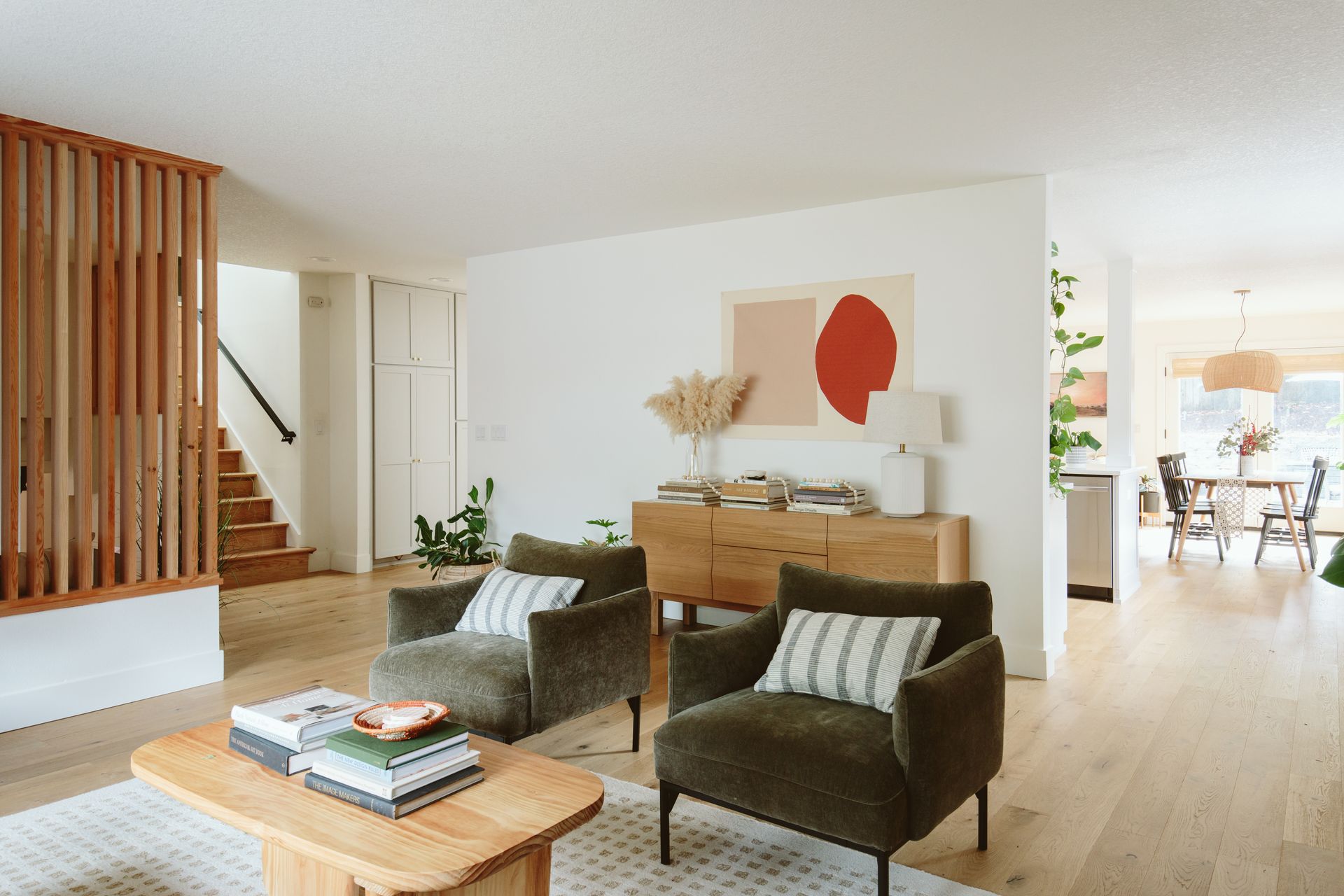5 Must-Have Skills Every Interior Designer Should Learn
Alright, let’s talk skills. We all know interior design is more than just picking out throw pillows and creating Pinterest-worthy rooms. It’s an art, it’s a science, and it’s a lot of work. Whether you’re just starting out or have been designing for a while, there are a few essential skills every interior designer needs in their toolbox. These skills not only help you nail your designs but also set you up for long-term success in this ever-evolving industry.
So, grab your sketchbook, your measuring tape, and maybe a coffee (we’re about to get into it) because I’m breaking down the 5 must-have skills every interior designer should learn to level up their game and build a career that’s both creative and sustainable.
1. Space Planning: Because Function Is Just as Important as Beauty
Let’s get down to business. If you’re serious about interior design, space planning is where you need to start. No matter how pretty the furniture is or how perfectly placed the artwork is, if the space doesn’t work for the people using it, then all that design work is just…well, a Pinterest dream.
Space planning is the backbone of any great design. It’s about optimizing the layout of a room to make it both functional and aesthetically pleasing. Whether you’re working with a tiny apartment or an expansive office space, understanding how to maximize every inch of a room is key.
Here’s why you need it:
- Understand Flow: You need to know how to create comfortable, usable spaces where people can move around without bumping into things (we’ve all been there).
- Furnishing Wisely: Space planning helps you choose the right size furniture, whether it’s picking the perfect sofa for a small living room or selecting desks and workstations that make sense for a corporate office.
- Creating Zones: Especially in open-plan spaces, it’s about creating zones. A kitchen island can be a social hub, a reading nook, or a workspace—but you need to know how to plan these areas to serve their intended purpose without cramping the space.
This skill is the foundation for every project you take on. Without great space planning, your designs won’t function as beautifully as they look.
2. Color Theory: The Magic Behind Creating the Right Mood
Next up: color. You’d think this one is simple, right? Just pick colors you like. WRONG. Color theory is so much more than just picking paint swatches that match your mood. It’s about understanding how different hues interact with one another, how they affect the emotions of a space, and how to choose the perfect palette that brings your design to life.
Here’s why it’s a must-have skill:
- Understanding Color Relationships: You need to know which colors work well together. Are you creating a relaxing bedroom with soft blues and greens? Or an energizing office space with pops of yellow and orange? Understanding the
relationship between colors will help you design spaces that evoke the right emotions.
- Color Psychology: The right color can set the tone for a room. Cool colors like blue and green tend to be calming, while warmer tones like red and yellow can create excitement or warmth. Using color thoughtfully is key to designing spaces that feel just right.
- Creating Balance: Learning how to balance bold colors with neutrals, or how to use dark colors in a small room, will make your design work. Mastering this skill means you can bring a room together without overwhelming it.
Let’s face it: color is everything. If you can’t nail this, your designs might fall flat. So, dive into the world of color theory and start using it to create spaces that make a real emotional impact.
3. CAD and Design Software: Because Technology Is Your Friend
If you’re not using design software yet, what are you even doing? Yes, traditional hand-drawing and sketching have their place (I’m a huge fan of a good hand-drawn floor plan), but in today’s world, technology is everything. Learning how to use CAD (Computer-Aided Design) and other design software is a total game-changer for interior designers.
Here’s why you need to embrace tech:
- Precision and Accuracy: Software like AutoCAD, SketchUp, and Revit allows you to create accurate, detailed floor plans and 3D renderings. This means you can quickly visualize your ideas and avoid the guesswork that comes with hand-drawn plans.
- Client Presentations: Clients love seeing their space come to life in 3D. Imagine being able to show a client what their future living room will look like with different furniture layouts and color schemes. Software makes it easier to communicate your ideas and get buy-in from clients.
- Efficiency: Forget about erasing and redrawing things by hand. Design software speeds up your workflow, helping you complete projects faster and with more precision.
Don’t be intimidated by design software. Sure, it takes some time to master, but once you do, you’ll wonder how you ever worked without it. Trust me—it’s an essential skill for any interior designer, and it’ll make your designs look more professional and polished.
4. Budgeting and Project Management: Because Interior Design Is a Business, Too
Okay, time for a reality check: interior design isn’t just about creating beautiful spaces. It’s also about managing budgets, timelines, and resources. Without a solid understanding of project management and budgeting, your designs could quickly spiral out of control.
Here’s why budgeting is a must-have skill:
- Budgeting for Clients: Interior design is an investment. Clients want to know how much their dream space will cost, and they want you to manage their money wisely. Understanding how to create and stick to a budget is essential for keeping your clients happy and staying profitable.
- Time Management: You’re juggling multiple projects, vendors, and deadlines. If you don’t know how to prioritize tasks, keep things on track, and stick to deadlines, it’ll be hard to grow your design business.
- Vendor Relations: From furniture suppliers to contractors, managing vendor relationships is crucial. You need to know how to negotiate prices, work within budgets, and ensure that everyone is on the same page.
If you think being an interior designer is just about choosing pretty things, think again. Being able to manage budgets and timelines effectively will save you and your clients from unnecessary stress, and it’ll keep your business running smoothly.
5. Communication Skills: Because Design Is a Team Effort
Last but certainly not least, let’s talk about communication. As an interior designer, you’re not just working with clients—you’re collaborating with contractors, vendors, and sometimes entire teams. You need to communicate your vision clearly and effectively to everyone involved in the project. If you can’t do that, your design ideas won’t get executed properly.
Here’s why communication is essential:
- Client Relations: Your clients need to trust you. Being able to listen to their needs, ask the right questions, and clearly explain your design decisions will help build that trust.
- Team Collaboration: Working with contractors and other design professionals requires excellent communication. You need to convey your ideas, offer constructive feedback, and ensure that everyone understands their role in making your design a reality.
- Problem Solving: Sometimes things don’t go as planned, and you need to figure out how to handle problems on the fly. Whether it’s budget cuts, last-minute design changes, or issues with contractors, your ability to clearly communicate solutions will be a game-changer.
Great design requires collaboration, and that can’t happen if communication breaks down. Whether you’re discussing materials with a vendor or walking a client through your design ideas, strong communication skills will make your job—and your designs—much more effective.
Conclusion: Get Ready to Level Up Your Interior Design Game
There you have it—5 must-have skills every interior designer should learn to set themselves up for success. It’s not just about making spaces look good; it’s about creating functional, beautiful designs that solve problems, work within budgets, and communicate your vision effectively.
Master these skills, and you’ll be well on your way to becoming a sought-after interior designer with a portfolio full of impressive work. So, get out there and start practicing! Whether you're taking a course to hone your CAD skills or diving into color theory, every step you take will bring you closer to being the interior designer you’ve always dreamed of becoming.
Now go, design some killer spaces!




